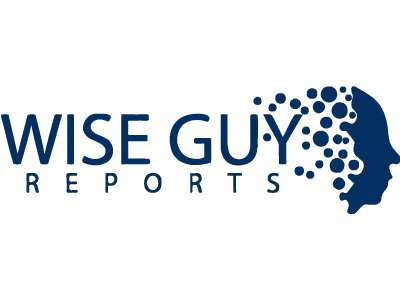Chemicals Industry Today
Organic Sand Binders Market Growth Analysis (2025–2032) – CAGR of 7.22% Expected Amid Sustainable Manufacturing Trends
The Organic Sand Binders Market refers to the global industry engaged in the production and application of organic binder materials used for binding sand in metal casting and foundry processes. These binders, typically derived from resins, natural polymers, and other organic compounds, help create strong, flexible, and thermally stable molds and cores that hold molten metal during casting. Organic sand binders are valued for their good binding strength, reduced gas generation, improved surface finish, and lower environmental impact compared to conventional synthetic binders. They are widely used across automotive, aerospace, machinery, and construction equipment manufacturing industries, where precision metal casting is essential.
The Organic Sand Binders Market CAGR (growth rate) is expected to be around 7.22% during the forecast period (2025 - 2032).
Drivers
Growing Foundry Industry:
Organic sand binders are extensively used in metal casting to improve mold strength and reduce emissions, driving demand.
Eco-Friendly Shift:
Increasing preference for organic binders over synthetic or inorganic ones due to lower VOC emissions and improved biodegradability.
Automotive & Aerospace Demand:
Expansion of lightweight casting components in automotive and aerospace sectors fuels binder consumption.
Regulatory Push:
Stricter environmental regulations encourage foundries to adopt low-emission binders, benefiting organic variants.
Improved Casting Quality:
High binding strength, better surface finish, and reduced gas generation enhance product adoption.
For In depth Information Get Free Sample Copy of this Report @
https://www.wiseguyreports.com/sample-request?id=639438
Organic Sand Binders Market Companies Are:
Imerys S.A, Momentive Performance Materials, Inc., ASK Chemicals, RPM International Inc., Ashland Global Holdings Inc., Houghton International, Inc., Solvay S.A, Evonik Industries AG, Henkel AG & Co. KGaA, PAR Group, Inc, BASF SENewparaCMI Industries, Inc, Dymax Corporation, The Dow Chemical Company
Restraints
Higher Cost vs. Inorganic Binders:
Organic binders can be more expensive, restricting adoption in cost-sensitive foundries.
Thermal Limitations:
Reduced thermal stability compared to some inorganic binders limits use in high-temperature applications.
Raw Material Dependency:
Fluctuations in supply and prices of natural/organic raw materials affect market stability.
Performance Consistency Issues:
Variation in organic material quality may lead to inconsistent casting performance.
Organic Sand Binders Market Segmentation Insights
Organic Sand Binders Market Binder Type Outlook
· Portland Cement
· Sodium Silicate
· Water
· Other Binders
Organic Sand Binders Market Application Outlook
· Construction
· Foundry
· Agriculture
· Automotive
· Other Applications
Organic Sand Binders Market End User Outlook
· Foundries
· Construction Contractors
· Farmers
· Industrial Manufacturers
· Other End Users
Organic Sand Binders Market Grade Outlook
· High Strength
· Medium Strength
· Low Strength
Organic Sand Binders Market Form Factor Outlook
· Powder
· Liquid
· Slurry
Opportunities
Green Manufacturing Growth:
Rising adoption of sustainable foundry practices creates scope for bio-based binder solutions.
Emerging Markets:
Industrialization in Asia-Pacific, Africa, and Latin America will increase foundry activities and binder demand.
R&D in Hybrid Binders:
Development of hybrid organic-inorganic binder systems for higher thermal resistance and reduced emissions.
Lightweight Metals & EV Industry:
Growth in aluminum casting for electric vehicles enhances demand for advanced organic binders.
Government Support for Cleaner Technologies:
Subsidies and incentives for low-emission industrial materials can accelerate adoption.
Purchase Full Report :
https://www.wiseguyreports.com/checkout?currency=one_user-USD&report_id=639438
Challenges
Competition from Inorganic Binders:
Inorganic binders (like sodium silicate-based systems) are preferred in high-heat applications, challenging organic adoption.
Awareness Gap in Developing Regions:
Many small foundries lack knowledge about the advantages of organic binders.
Adoption Barriers in Traditional Foundries:
Reluctance to shift from conventional resin-based binders slows market penetration.
Technological Standardization:
Lack of uniform standards and specifications for organic binders creates market entry challenges.
Browse Related Report:
Oxy Dry Powder Market |Japan |German |French |Korean |China |Spanish |
Organosilicone Surfactant Market |Japan |German |French |Korean |China |Spanish |
Nickel Brazing Filler Metals Market |Japan |German |French |Korean |China |Spanish |
Pa1212 Resin Market |Japan |German |French |Korean |China |Spanish |
Polyol Preservatives Market |Japan |German |French |Korean |China |Spanish |
You May Also Like This Regional Repots:
有機砂バインダー市場 | Markt für organische Sandbindemittel | Marché des liants de sable organiques | 유기 모래 결합제 시장 | 有机砂粘合剂市场 | Mercado de aglutinantes de arena orgánicos
Share on Social Media



Other Industry News
Ready to start publishing
Sign Up today!








